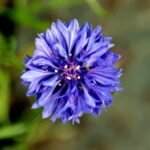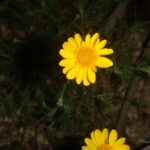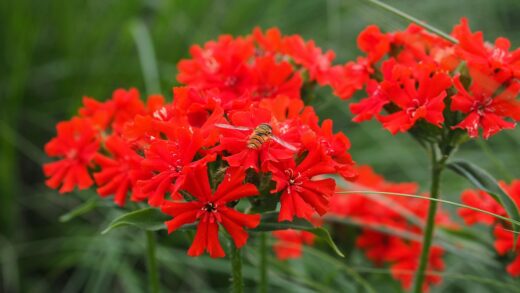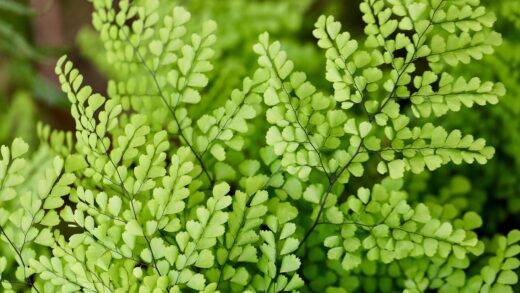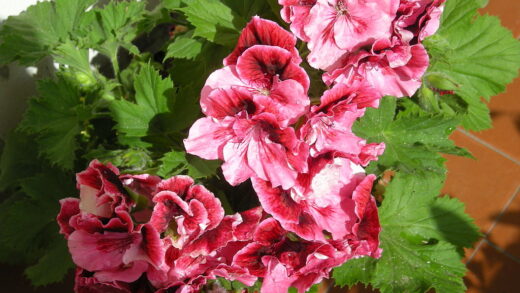Watering and fertilizing the regal pelargonium

Mastering the art of watering and fertilizing is absolutely fundamental to the successful cultivation of regal pelargoniums, as these plants have very specific requirements that set them apart from their more common relatives. Their root systems are particularly sensitive to excess moisture, making them highly susceptible to root rot if the soil remains waterlogged. Consequently, the core principle of any watering strategy must be to allow the soil to dry out significantly between applications. This approach prevents the suffocation of roots and the development of fungal pathogens that thrive in constantly damp conditions. It is a delicate balance, as you must provide enough water to sustain the plant’s metabolic processes without creating an environment that invites disease.
The physical properties of the soil are inextricably linked to any watering regimen. No matter how carefully you water, a dense, poorly-draining soil mix will retain too much moisture and undermine your efforts. This is why using a light, airy potting medium amended with perlite or coarse sand is non-negotiable. This type of mix allows excess water to drain away rapidly, creating the essential air pockets within the soil that the roots need to breathe. The pot itself must also have adequate drainage holes to ensure that water never has a chance to pool at the bottom.
The most effective watering philosophy for regal pelargoniums is often described as the “drought-then-drench” or “soak and dry” method. This involves watering the plant thoroughly until water is seen escaping from the drainage holes, ensuring the entire root ball is completely saturated. Then, and this is the critical part, you must not water the plant again until the top few centimetres of the soil have become completely dry to the touch. This cycle of deep hydration followed by a period of drying is the key to maintaining a healthy root system.
Finally, the quality of the water itself can have an impact on the plant’s health over time. Regal pelargoniums prefer slightly acidic soil conditions. If you live in an area with very hard, alkaline tap water, the repeated application of this water can cause the soil’s pH to rise and can lead to a buildup of mineral salts. While most plants will tolerate standard tap water, using collected rainwater or filtered water occasionally can be beneficial. If you notice a white, crusty buildup on the soil surface or the pot, it is a sign of mineral accumulation, which can be flushed out by watering heavily with pure water and allowing it to drain completely.
Practical watering techniques
The most reliable method for determining when to water is not by following a calendar, but by physically assessing the soil’s moisture content. The ‘finger test’ is a simple and effective technique: insert your index finger into the soil up to the second knuckle, which is a depth of about 3-5 cm. If the soil at your fingertip feels dry, it is time to water the plant. If you can feel any coolness or moisture, it is best to wait another day or two and then check again. This direct method accounts for the actual conditions your plant is experiencing, which are influenced by temperature, humidity, light, and its current growth stage.
More articles on this topic
When you do water, the method of application matters. It is best to water the soil directly, avoiding wetting the leaves and flowers as much as possible. Applying water at the base of the plant, either with a long-spouted watering can or by setting the pot in a tray of water for about 30-60 minutes (a technique known as bottom-watering), helps to prevent fungal diseases like botrytis, which can develop on damp foliage. Bottom-watering is particularly effective as it encourages roots to grow downwards and ensures the entire root ball is hydrated without compacting the topsoil. If you use this method, be sure to let the pot drain fully afterwards.
The goal of each watering session should be to thoroughly saturate the root ball. A common mistake is to give the plant small, frequent sips of water, which only moistens the top layer of soil. This practice can lead to the development of a shallow root system and leaves the lower roots dry. To ensure a deep watering, continue to add water until it flows freely from the pot’s drainage holes. This not only provides adequate moisture but also helps to flush out any accumulated mineral salts from the soil, contributing to a healthier root environment in the long term.
Learning to recognize the early signs of watering stress is a crucial skill for any gardener. A plant that is underwatered will often have slightly limp or wilting leaves that recover quickly after watering. The lower leaves may also turn yellow and become crisp before dropping off. Conversely, a more dangerous situation is overwatering, which also causes yellowing leaves, but these leaves will typically feel soft or even mushy. The base of the stems may turn brown and soft, and the entire plant might look wilted even when the soil is wet, which is a clear sign that the roots are suffocating and beginning to rot.
Seasonal adjustments in watering
Watering needs are not static; they fluctuate dramatically with the seasons, and your routine must adapt accordingly. During the spring and early summer, the plant is in its most active phase of growth and flowering, which means it is transpiring more and using water at a higher rate. You will need to monitor the soil moisture more frequently during this period and will likely be watering more often than at any other time of the year. However, the fundamental principle of allowing the soil to dry out between waterings still applies, even when the interval between them is shorter.
More articles on this topic
As summer progresses and temperatures rise, you might assume the plant needs even more water, but this is not always the case for regal pelargoniums. In very hot weather, they often slow their growth and enter a state of semi-dormancy as a survival mechanism. While you must prevent the soil from drying out completely, you should be especially cautious not to overwater during a heatwave, as inactive roots sitting in warm, wet soil are prime candidates for rot. Continue to check the soil moisture carefully and water only when necessary.
The arrival of autumn signals a time to begin tapering off your watering frequency. As the days shorten and temperatures cool, the plant’s growth will naturally slow down in preparation for its winter dormancy. Its water requirements will decrease significantly during this time. You should gradually extend the interval between waterings, allowing the soil to become progressively drier. This reduction in water is an important environmental cue that helps to harden off the plant and encourage it to enter its necessary rest period.
During the winter dormancy period, the plant requires very little water. For a plant being overwintered in a cool location, you may only need to provide a small amount of water every three to four weeks. The goal is simply to prevent the root ball from desiccating completely. The soil should be kept mostly dry throughout the winter. Overwatering during dormancy is one of the most common and fatal mistakes in regal pelargonium care. When spring arrives, you can gradually begin to increase watering again as you see signs of new growth.
Understanding fertilizer needs
Fertilizer provides the essential mineral nutrients that plants cannot get from water and air alone, and it is crucial for supporting the vigorous growth and prolific blooming of a regal pelargonium. The three primary macronutrients, displayed on fertilizer packaging as the N-P-K ratio, are Nitrogen (N), Phosphorus (P), and Potassium (K). Nitrogen is primarily responsible for lush, green foliage growth. Phosphorus is vital for root development and energy transfer. Potassium, often called potash, is essential for overall plant health, disease resistance, and, most importantly, for promoting abundant and high-quality flower production.
For regal pelargoniums, the key to a spectacular floral display is a fertilizer that is rich in potassium. While a balanced fertilizer will work, a formulation specifically designed for flowering plants like tomatoes or roses, which has a higher ‘K’ value in its N-P-K ratio, will yield the best results. High-potassium feeds encourage the plant to direct its energy towards producing buds and flowers rather than excessive leaves. Conversely, a fertilizer with a high nitrogen content should be avoided during the main growing season, as it will result in a large, leafy plant with very few, if any, blooms.
There are several types of fertilizers available, but for container-grown regal pelargoniums, a water-soluble or liquid fertilizer is often the most effective choice. This type is mixed with water and applied during a regular watering session, making the nutrients immediately available for the plant’s roots to absorb. This gives you precise control over when and how much you feed your plant. Slow-release granular fertilizers, which are mixed into the soil and release nutrients over a period of months, can also be used, but they offer less control over the nutrient supply, which may not align perfectly with the plant’s changing seasonal needs.
It is critically important to understand the risks of over-fertilizing. Applying too much fertilizer, or applying it too frequently, can lead to a buildup of fertilizer salts in the soil, which can “burn” and damage the plant’s delicate roots. Symptoms of fertilizer burn include brown, crispy leaf edges and tips, stunted growth, and a general decline in the plant’s health. It is always safer to under-fertilize than to over-fertilize. If you suspect you have applied too much, you can try to flush the soil by watering the plant heavily with plain water several times, allowing it to drain completely each time.
A strategic fertilization schedule
The timing of your fertilizer applications is just as important as the type of fertilizer you use. You should begin feeding your regal pelargonium in the early spring, just as it begins to show signs of new growth after its winter dormancy. This initial feeding provides the necessary nutrients to support the development of new leaves and stems, building the framework for the upcoming flowering season. Starting too early, while the plant is still dormant, is ineffective and can harm the inactive roots.
During the peak growing and blooming season, from spring through to early summer, the plant should be fed on a regular and consistent basis. A highly effective method is to use a diluted liquid fertilizer solution. Many expert growers recommend a “weakly, weekly” approach, which means using the fertilizer at one-quarter to one-half of the strength recommended on the packaging, but applying it with every watering. A slightly less intensive but also very effective schedule is to apply a half-strength solution every two to three weeks. This provides a steady, gentle supply of nutrients that the plant can easily utilize.
When using a liquid fertilizer, proper application is key to preventing root damage. It is a crucial rule to never apply fertilizer to dry soil, as the concentrated salts can quickly desiccate and burn the roots. To avoid this, always water the plant with plain water first, allowing it to moisten the soil and hydrate the roots. Then, follow up with the diluted fertilizer solution. This ensures the nutrients are distributed evenly throughout the moist soil and can be absorbed safely by the plant.
As the late summer and early autumn approach, the plant’s growth will naturally slow down, and its need for nutrients will diminish. This is the signal to stop your feeding program for the year. Ceasing fertilization helps the plant to transition smoothly into its winter dormancy. Continuing to feed it late into the season can encourage the growth of soft, weak new shoots that are vulnerable to cold and disease, and it can interfere with the physiological processes that prepare the plant for its essential winter rest. No fertilizer should be given at all during the entire winter period.
📷Velq1958, CC BY-SA 3.0, via Wikimedia Commons








